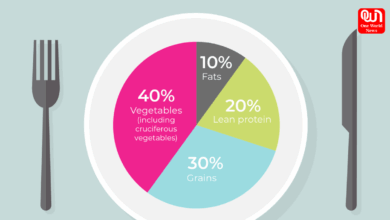Jogging vs Walking: Which Is Better For Weight Loss? Expert Shares Insights
Explore the weight loss dynamics of jogging vs walking – from calorie burn to joint impact. Discover the best fit for your fitness journey!
Unlocking the Weight Loss Debate: Delving into the Dynamics of Jogging vs. Walking”
Embarking on a weight loss journey involves making informed choices about exercise routines. Walking and jogging are two popular options, each with its own set of benefits and considerations. In this exploration, we delve into the intricacies of jogging and walking to determine which might be the better choice for weight loss, considering factors such as intensity, efficiency, joint impact, injury risk, adherence, and enjoyment.

Read more: Is PCOS Intersex Condition? Here’s 5 Reasons Why Some Say Yes
Caloric Expenditure: Unraveling the Numbers
Jogging takes the lead when it comes to burning calories. The intensity of jogging contributes to a higher caloric expenditure compared to walking. According to a study in the Journal of Strength and Conditioning Research, a person weighing 155 pounds can torch approximately 298 calories in 30 minutes of moderate-paced jogging. In contrast, a brisk walk in the same timeframe might burn around 167 calories. The numbers highlight the potential for jogging to be a more efficient calorie-burning exercise.

Intensity and Efficiency: The Heart of the Matter
The intensity of an exercise session plays a crucial role in weight loss. Jogging, being a higher-intensity activity, elevates both heart rate and metabolism more than walking. This increased intensity can trigger excess post-exercise oxygen consumption (EPOC), leading to continued calorie burn even after the workout. However, it’s essential to note that the higher intensity of jogging may not be sustainable for everyone, potentially resulting in shorter exercise durations compared to walking.
Read more: Sore nipples: why are my nipples sore? 10 possible reasons
Joint Impact and Injury Risk: The Balancing Act
For those concerned about joint health and injury risk, walking emerges as a safer option. Walking is generally lower impact, making it suitable for individuals with joint issues or beginners to exercise. On the other hand, jogging, especially on hard surfaces like pavement, can increase the risk of injuries such as shin splints, knee pain, and stress fractures. The joint-friendly nature of walking renders it a more accessible and sustainable choice for a broader population.
Adherence and Enjoyment: The Key to Long-Term Success
Adherence to an exercise routine is pivotal for achieving sustained weight loss. Personal preferences, convenience, and enjoyment all play significant roles in ensuring commitment to a workout regimen. Some individuals may find walking more enjoyable and convenient than jogging, leading to better adherence and consistency over time. Considerations such as access to safe walking routes, time constraints, and individual preferences should be factored in when choosing between walking and jogging for weight loss.
We’re now on WhatsApp. Click to join.
In the jogging vs walking debate, the decision ultimately rests on individual factors. Jogging stands out for its higher calorie-burning potential due to increased intensity, but it may not be the best fit for everyone. Walking, with its lower impact, proves to be a safer option for those with joint concerns and beginners to exercise. The key lies in finding a balance that aligns with personal preferences, fitness levels, and health conditions. Both jogging and walking can contribute significantly to weight loss when integrated into a well-rounded exercise program, emphasizing the importance of tailoring the choice to individual needs. In the realm of weight loss, there is no one-size-fits-all approach. The decision between jogging and walking extends beyond mere calorie counts and injury risks. It involves understanding one’s body, preferences, and lifestyle. While jogging may provide a quicker burn, walking fosters inclusivity, making it accessible to a broader demographic. The sustainable nature of walking, coupled with the enjoyment factor, enhances long-term adherence. Ultimately, the synergy between personal inclination, physical well-being, and overall lifestyle dictates the effectiveness of either choice. The path to weight loss is not a race but a personalized journey, where the balance between effort and enjoyment is key.
Like this post?
Register at One World News to never miss out on videos, celeb interviews, and best reads.








